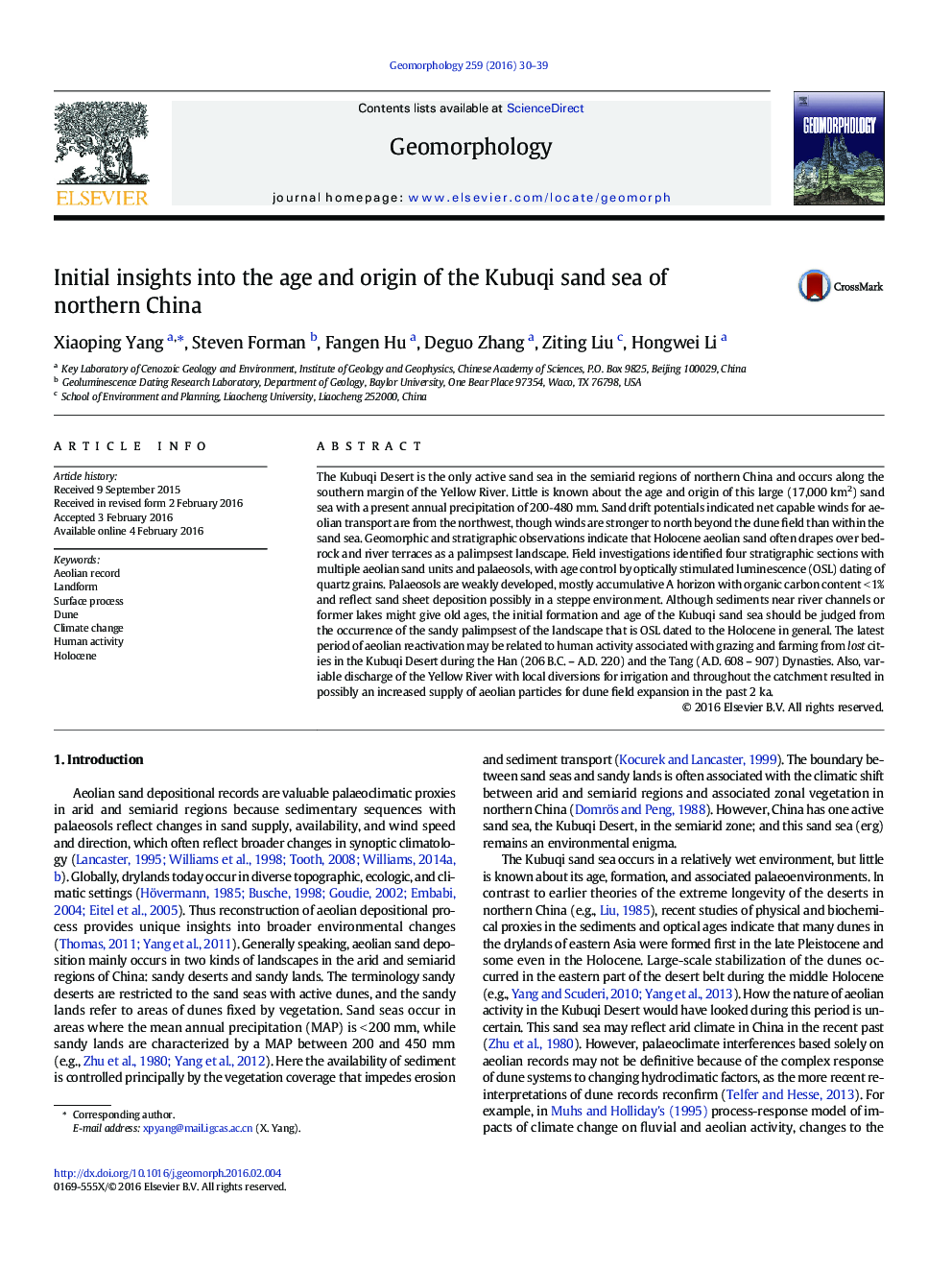| کد مقاله | کد نشریه | سال انتشار | مقاله انگلیسی | نسخه تمام متن |
|---|---|---|---|---|
| 6431616 | 1635390 | 2016 | 10 صفحه PDF | دانلود رایگان |

- The Kubuqi as a palimpsest landscape is demonstrated on the basis of field work.
- The age of entire field of the sand sea is provided on the basis of OSL dating.
- Human impact as the triggering factor for landscape development is argued.
- Complex causes for dune activation in the Kubuqi are discussed.
The Kubuqi Desert is the only active sand sea in the semiarid regions of northern China and occurs along the southern margin of the Yellow River. Little is known about the age and origin of this large (17,000 km2) sand sea with a present annual precipitation of 200â480 mm. Sand drift potentials indicated net capable winds for aeolian transport are from the northwest, though winds are stronger to north beyond the dune field than within the sand sea. Geomorphic and stratigraphic observations indicate that Holocene aeolian sand often drapes over bedrock and river terraces as a palimpsest landscape. Field investigations identified four stratigraphic sections with multiple aeolian sand units and palaeosols, with age control by optically stimulated luminescence (OSL) dating of quartz grains. Palaeosols are weakly developed, mostly accumulative A horizon with organic carbon content <Â 1% and reflect sand sheet deposition possibly in a steppe environment. Although sediments near river channels or former lakes might give old ages, the initial formation and age of the Kubuqi sand sea should be judged from the occurrence of the sandy palimpsest of the landscape that is OSL dated to the Holocene in general. The latest period of aeolian reactivation may be related to human activity associated with grazing and farming from lost cities in the Kubuqi Desert during the Han (206 B.C. - A.D. 220) and the Tang (A.D. 608 - 907) Dynasties. Also, variable discharge of the Yellow River with local diversions for irrigation and throughout the catchment resulted in possibly an increased supply of aeolian particles for dune field expansion in the past 2Â ka.
Journal: Geomorphology - Volume 259, 15 April 2016, Pages 30-39